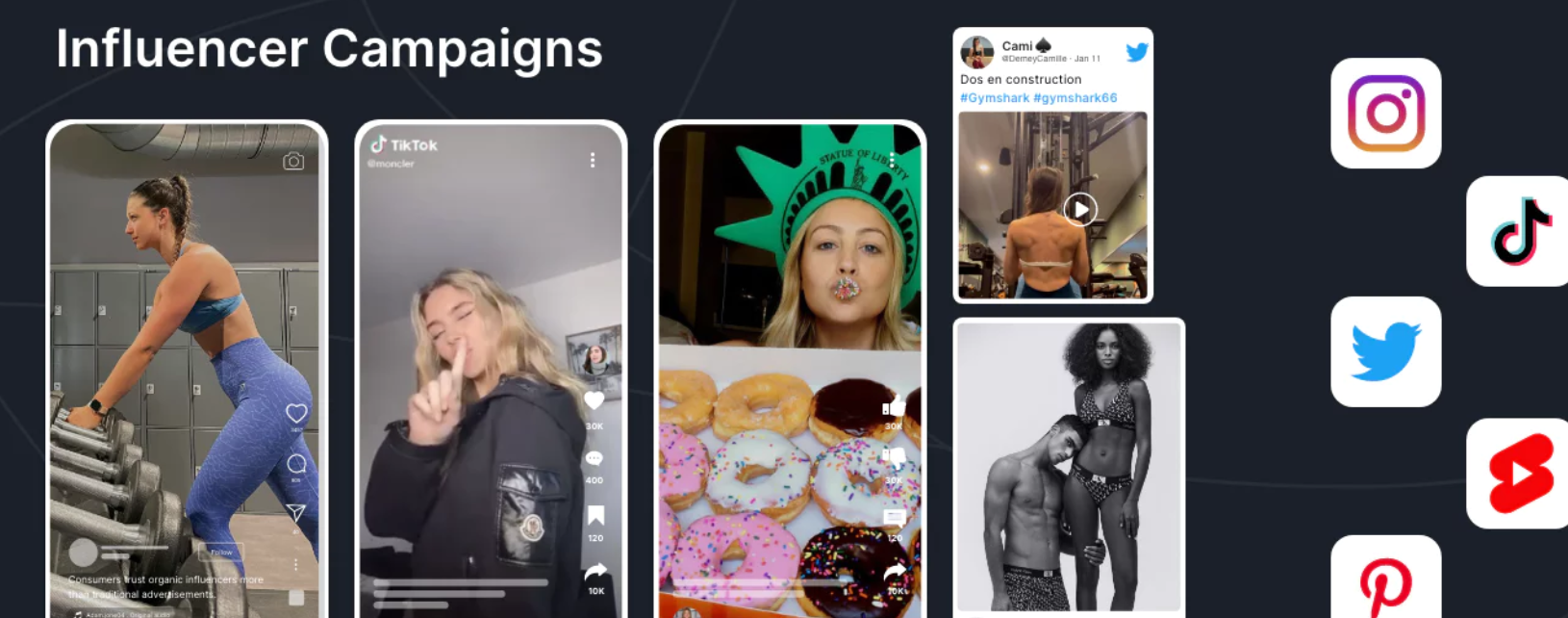Influencer marketing is no longer just a social media trend but, an integral part of modern advertising. Statistics show the global influencer marketing market size has more than tripled since 2020. The market is expected to grow to a record $33 billion in 2025. That suggests the growing demand for influential social creators to help brands boost visibility, drive revenue and connect with motivated audiences. The most impactful influencer marketing campaigns are authentic and resonate with both the creator’s voice and the brand’s goals and deliver real value to the audience.
From storytelling to product demos and interactive contests and challenges, influencer marketing campaigns go beyond advertisements to build genuine trust and engagement. A recent poll revealed up to 63% of marketers believe content generated by influencers is more effective than that created by brands.
This post will take a deep dive into influencer marketing campaigns, offering insights on how to do it right and examples of the campaigns that drive results to inspire you.
What is an Influencer Marketing Campaign?
Influencer marketing campaigns are strategic partnerships between content creators and brands designed to share authentic stories with target audiences. Look at it as a trusted recommendation. However, the best influencer marketing campaigns are not just about follower count. Instead they emphasize strategy and align creator authenticity with brand goals, clear KPIs and audience targeting.
Influencer content has significantly evolved over the years. Although some content creators still post selfies with the products of the brands they support, today’s campaigns also include live shopping, AI influencers, virtual reality demos and other approaches. Nonetheless, the one thing that has not changed is that audiences crave for honest recommendations from those they trust.
Effective influencer marketing campaigns must adhere to 3 key elements also referred to as the 3Rs. They include;
- Relevance: Does the influencer content naturally fit your brand?
- Reach: What is the influencer’s follower count? How far can the influencer spread your message?
- Resonance: do the influencer’s posts spark real engagement across your social platforms with the right audience?
Check out the following Instagram post of an influencer marketing campaign between Kenyan comedian and content creator, Eric Omondi and Bonventure Sanveat Biscuits.
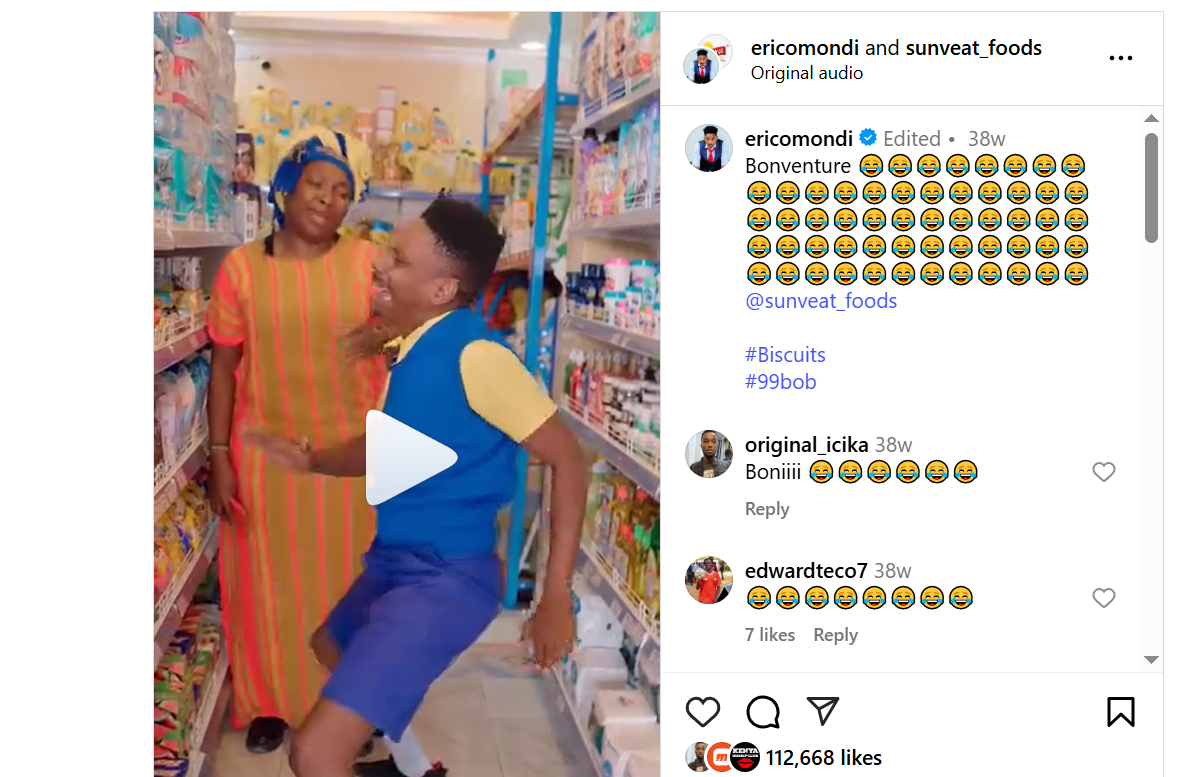
The Benefits of Influencer Marketing Campaigns
Influencer marketing campaigns Kenya are often very effective because they boost engagement, build trust and deliver measurable results for brands. Here are the benefits that your brand can gain from influencer marketing.
Build trust
Up to 36% of millennial consumers trust recommendations from people they follow more than conventional advertisements. Influencers have the ability to build trust with their audiences and, that also translates to brands that they work with.
Specific targeting
With advanced analytics, you can easily find the right influencers whose audience demographics align closely with your target market.
Multi-platform reach
Effective influencer marketing campaigns are not tied to one social media platform. Instead, today content creators connect with their followers across multiple social channels including tiktok, Instagram, x, Facebook, YouTube, google business, LinkedIn among others.
Real-time optimization
Instant access to campaign metrics can help brands to adjust creative, messaging and spend real time for better optimization and performance.
Types of Influencer Marketing Campaigns
You may be wondering, what actually makes an effective influencer marketing campaign? The best influencer marketing campaigns are strategic and structured. They include the following elements;
- Clear objectives and KPIs anchored on real campaign goals
- A defined timeline, whether you are pushing long-term brand awareness or a short-term new product launch.
- Strategic creator selection that aligns your brand values with audience demographics
- Consistent messaging
- Data-driven performance tracking to prove Return On Investment
Besides the elements highlighted above, an effective influencer marketing campaign should begin with proper and clear communication. That includes an overview, campaign goals, how you will measure success, timelines and expectations. Setting such a foundation ensures a win for both the rand and the influencer.
Setting the stage right from the beginning ensures that the influencer knows what will resonate with your audience and your brand. Besides, you also know how to support the influencer to deliver content that aligns with your vision.
Here are the most common types of influencer marketing campaigns.
Sponsored Posts
We have seen them numerous times. Sponsored posts are campaigns whereby influencers get paid to content and share content featuring a brand’s products or services with their followers. The content feels authentic to the influencer’s feed, allowing them creative freedom in how the product is presented, boosting content variety and appeal. Unlike other types of influencer marketing campaigns, sponsored posts are usually marked as so.
Below is an example of a sponsored post, featuring a collaboration between Kendall Jenner and H&M. in the post, Kendall Jenner is wearing a dress from H&M’s Giambattista Valli collection at a high profile event. The influencer showcases the product in a natural and stylish way that fits perfectly into her regular content.
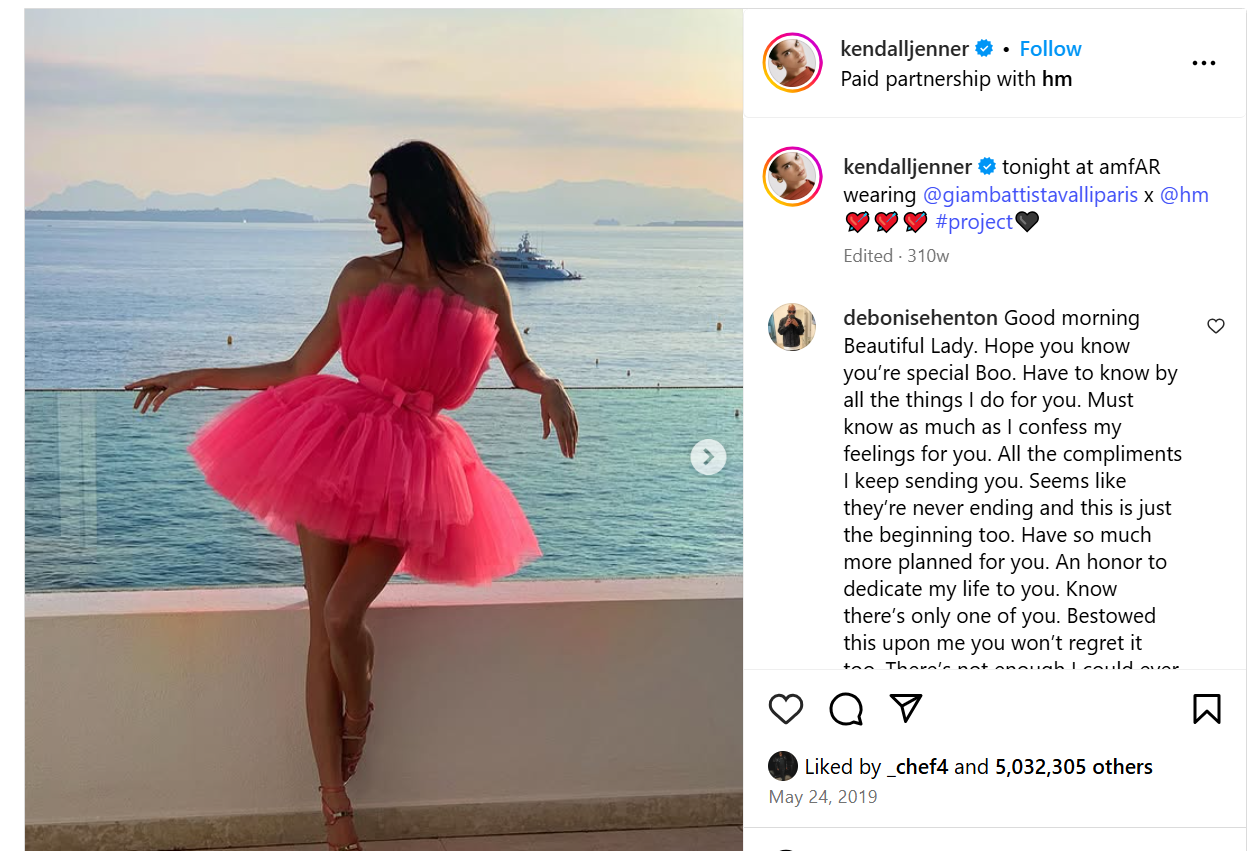
Product Reviews
Product review is a type of influencer marketing campaign whereby influencers evaluate products and share their honest feedback with the audience. Reviews build credibility and trust because they come from sources that the audience considers knowledgeable and unbiased. An eMarketer poll found out that 41% of social media users favor product reviews.
The following post is a good example of a product review. In the TikTok video, Kenyan comedian and influencer, Eunice Mammito evaluates the benefits and dispel some common myths about Nice&Lovely body lotion to her fans. She uses comedy in her acts to drive engagement.
Affiliate Marketing
Affiliate marketing is a strategy where influencers promote products using unique referral links or discount codes. Then, the influencers receive commissions based on sales generated through those links. A past study established an estimated 38% of consumers are more inclined to trust affiliate links from influencers than to those from non-influencers.
Affiliate marketing is a smart approach for brands, especially in the social commerce space, looking to drive results with low upfront costs. The following is a good example of affiliate marketing in action. Indigo Luna collaborates with a confidence coach to sell its products. The influencer shares an affiliate link in their bio, which also guarantees a 10% discount for users.
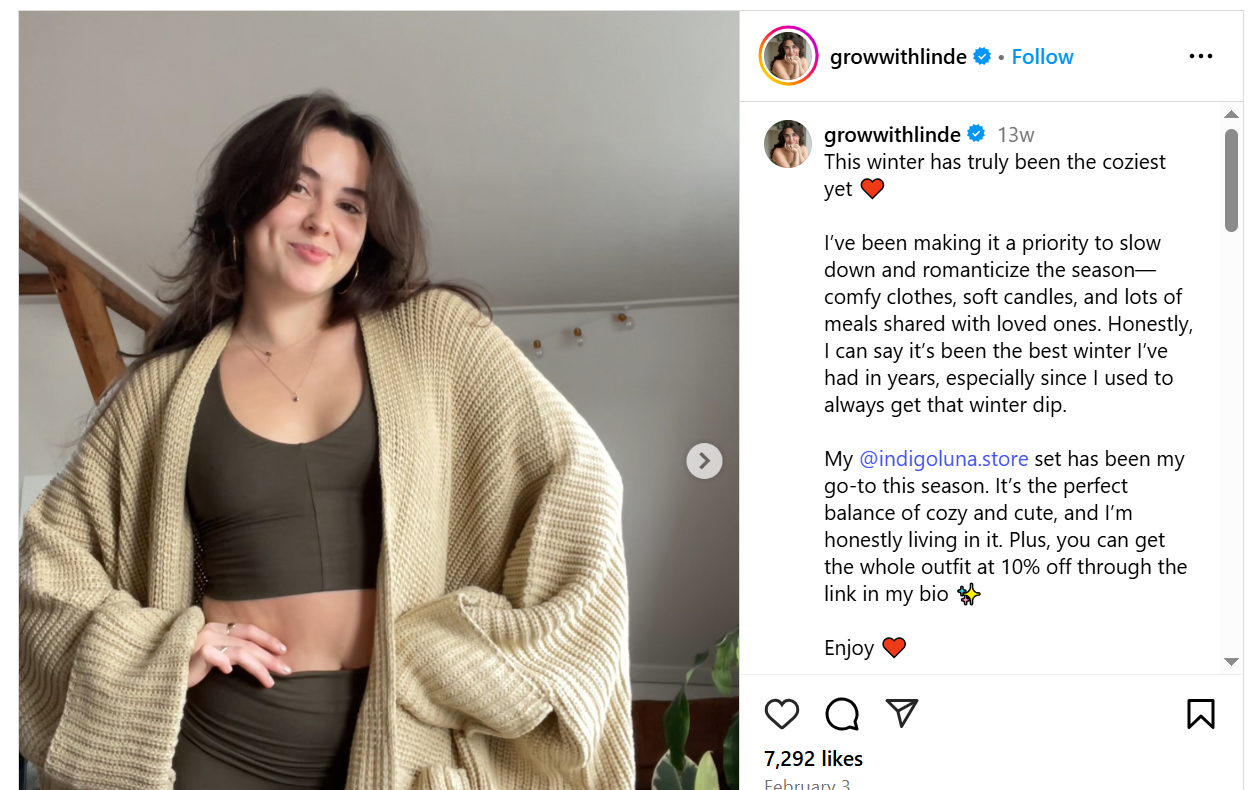
Giveaways
Giveaways involve influencers promoting contests where the participants have a chance to win prizes courtesy of the brand. That boosts engagement by encouraging audience participation through entries that require social actions such as sharing, commenting, linking or tagging posts. The effective use of this strategy can also impact a significant increase in sales.
In the following example, Credo Beauty partners with an influencer to host a giveaway, offering luxury summer sun-care package worth more than $300. The package comprises her top-five sun care favorites, a $150 facial and a shopping spree at Credo Beauty.
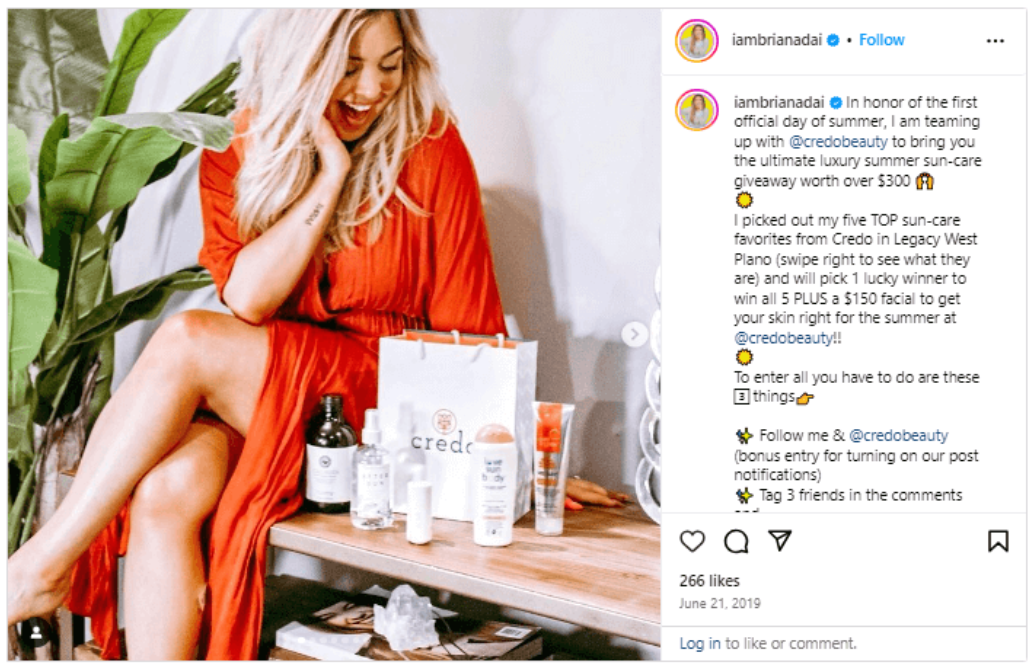
Takeovers
Social media takeovers allow influencers to post content directly to brand accounts. An influencer becomes a guest of the brand for the length of the campaign, lending their voice, image and style to be used by the brand. A takeover empowers the influencer to temporarily manage the brand’s social media accounts and post content on behalf of the brand.
Takeovers introduce fresh, diverse content to your social platforms, significantly driving engagement. It is a win-win scenario for both parties. Account takeovers give brands a cost effective but, temporary shake-up of their social media platforms. Besides, influencers get the chance to speak to entirely new and often, larger audiences that can also help them attract more followers.
In the following example, an influencer takes over Fully Psycle’s Instagram account. She engages with the brand’s audience by posting stories and content and, introducing fresh-dynamic interactions.
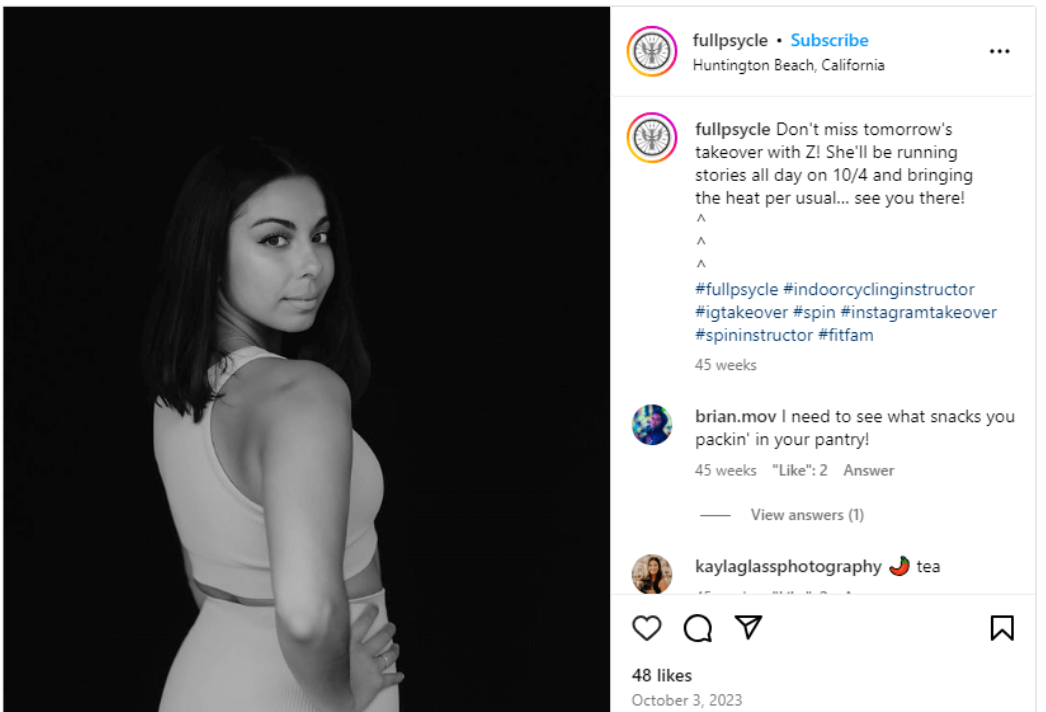
Challenges
Challenges are an exciting, fast-moving way to enhance visibility and engagement. Influencers initiate activities that encourage their followers to develop content that resonate with the marketing goals of your brand. They often use specific hashtags or themes that can quickly go viral after massive exposure.
The following TikTok post from Kenyan influencer, Azziad Nasenya is a good social media challenge. In the video, Azziad is dancing to the song, Utawezana by Femi one and Mejja. The #UtawezanaChallenge involved users replicating her dance moves or recreating their own moves for the song. The challenge went viral on social media in just a few days, attracting over 3 million views on TikTok.
Examples of Powerful Influencer Marketing Campaigns
The following are examples of some of the best influencer marketing campaigns to get your creative juices flowing.
Gymshark
Gymshark is a fitness clothing e-commerce brand and a leader in successful, long-term influencer collaborations. They have mastered the art of choosing brand ambassadors that resonate with their audiences; popular trainers and athletes. The following Instagram post features bodybuilder and Gymshark athlete David Laid. The fashionable photos with a simple caption announcing the release date and time for the collection attracted more than 320k likes.
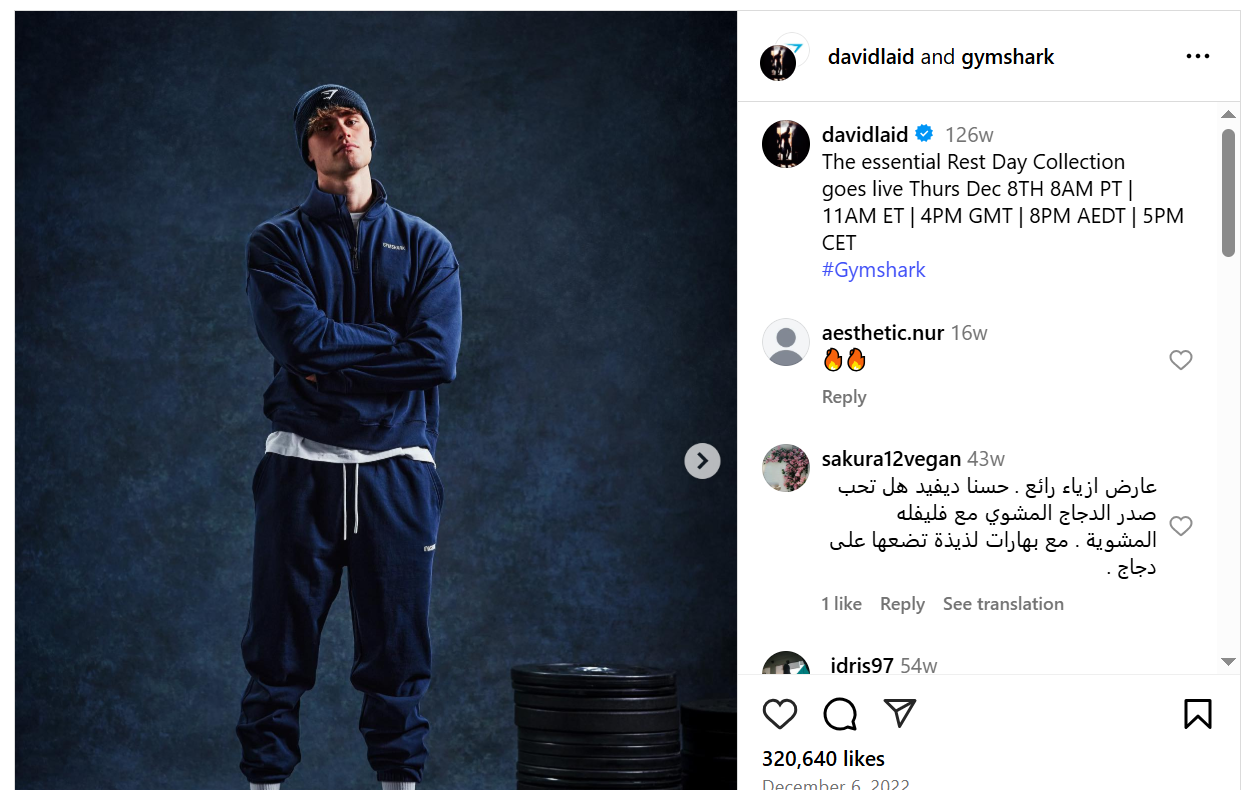
Louis Bekk x Tinder
UK-based DJ Louis Bekk collaborated with Tinder for a one-night-only pop up set at a London bagel shop, and, the place was packed. The crowd was not just there for the music but, creators filled up the venue to film and share the moment on social media.
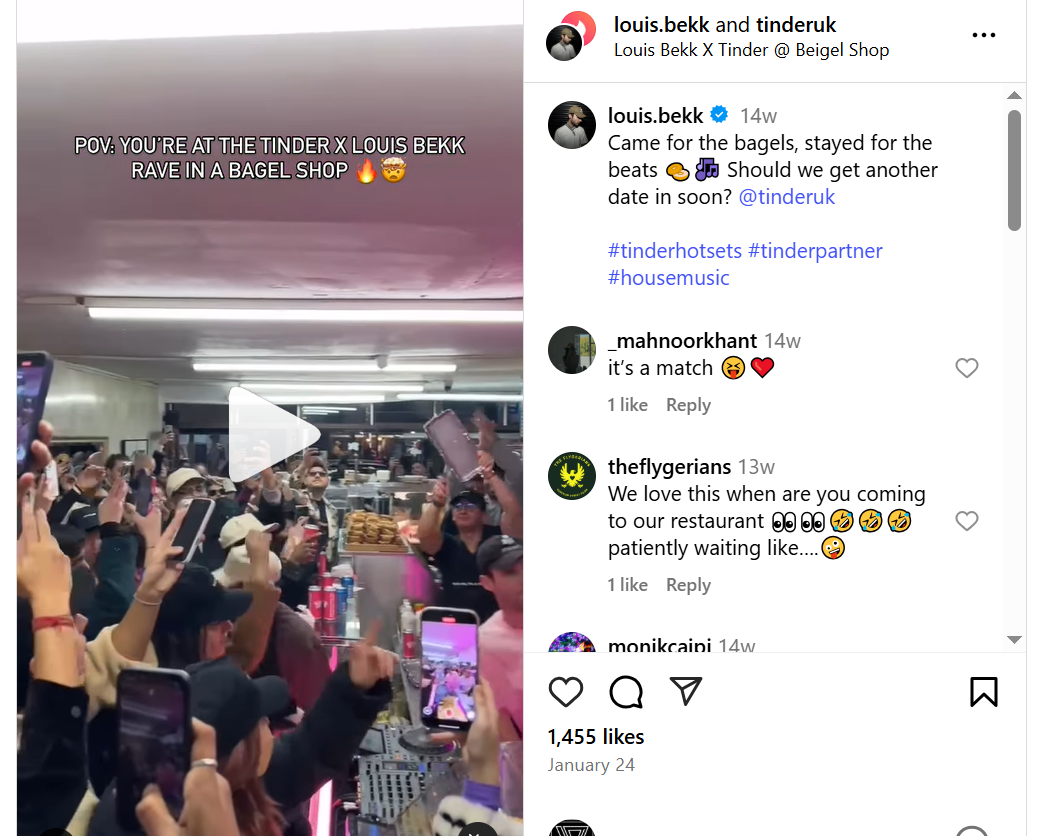
Although Louis was the featured act and core collaborator, he also served as a magnet for other influencers. Offering exclusive access enabled Tinder to spark a wave of organic content from attendees, including micro-influencers, amplifying the campaign beyond a single post.
Coca-Cola
Coca-Cola is one of the most popular brands in the world. In 2021, the brand launched its first TikTok campaign with a focus on content creators of color. It tapped singer, Khalid to announce its #SharetheMagic campaign. The company also partnered with the creator of the ‘Renegade’ TikTok dance, Jalaiah Harmon to create an original dance challenge.
#SharetheMagic campaign highlighted Coca-Cola as a champion of influencer diversity, helping the brand to attract content creators to collaborate with even after the end of the campaign.
Dior
Renowned beauty brand, Dior set a new level for beauty inclusivity with its 2020, 67 Shades of Dior influencer marketing campaign. It wanted to promote its forever foundation collection that featured 67 different shades to suit any skin tone. Dior wanted to create buzz around the new collection and draw attention to the diverse color options. The brand selected 67 influencers, each representing the unique shades in the collection. The influencers created content that the brand could reuse in its various social platforms and other channels.
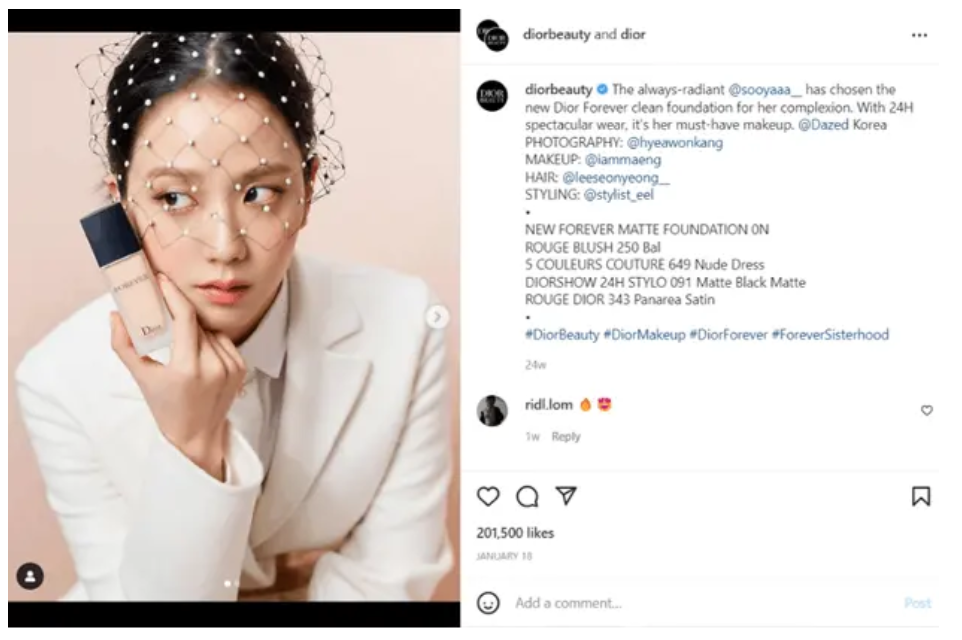
The campaign ran for 67 days, with Dior posting one piece of content from the influencers daily. The influencers represented a collective reach of 2.66 million potential customers. The campaign saw Dior attract more than 1.85 million impressions, 59K engagements, and a 120% growth in engagement. It also benefited from 290 pieces of content, 72% of which it repurposed for various platforms.
Fiji Water
Fiji Water also has one of the most effective influencer marketing campaigns, highlighting how targeted partnerships can significantly boost brand visibility and engagement. They partnered with fitness influencer, Danielle Bernstein, popularly known by her blog handle, ‘We Wore What.’ Together, the influencer and the brand unveiled ‘Bodyworewhat’ campaign, featuring a series of eight-minute free workout videos.
In the videos, Bernstein shares various exercises while emphasizing the importance of hydration with Fiji water. The campaign attracted more than 2000 pieces of user-generated content (UGC) to enrich the brand’s social media presence. It also impacted a significant surge in the popularity of the #FijiWater hashtag, with more than 190K posts on Instagram. That reflected the wider reach and engagement of the campaign.
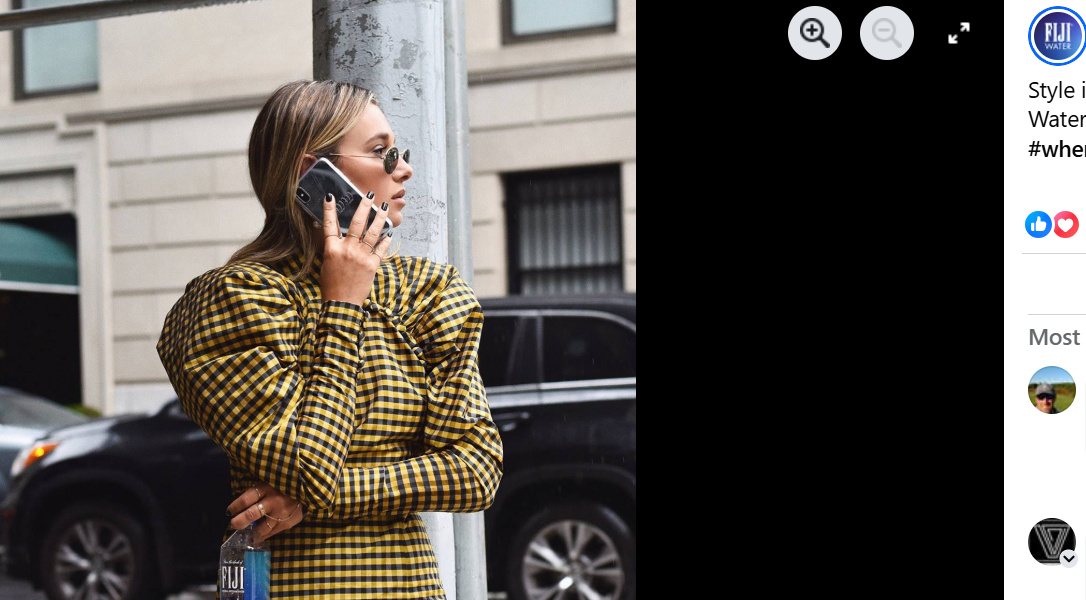
The Bottom line
The insights and examples highlighted above clearly show that effective influencer marketing campaigns are not just about throwing money at influencers and hoping for the best. Instead, they focus on building authentic connections, trusting creators with content creation, playing the long game and measuring the most important metrics. The best results come from finding the right influencers, empowering them to create their own voice and giving them the campaign space to deliver.

